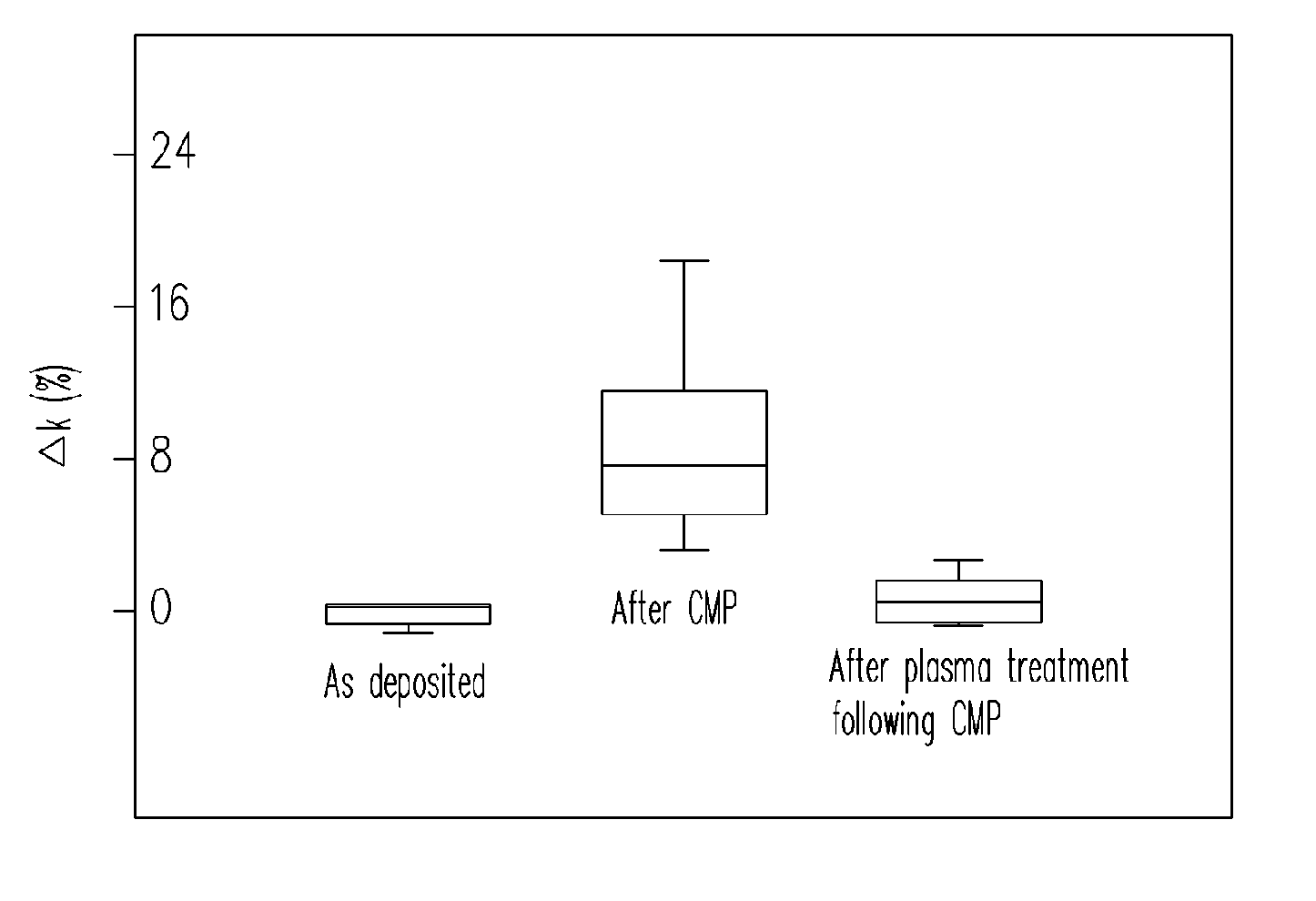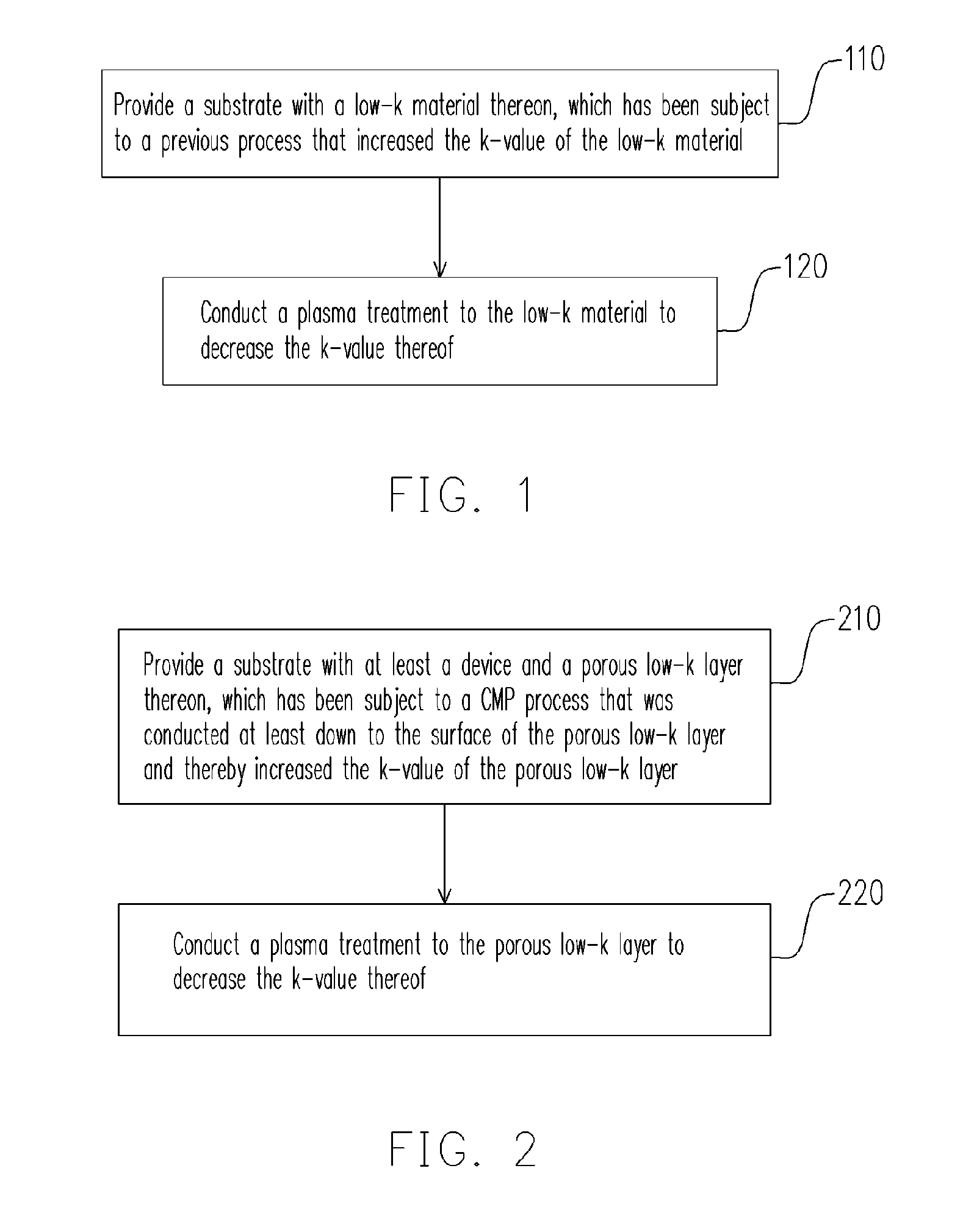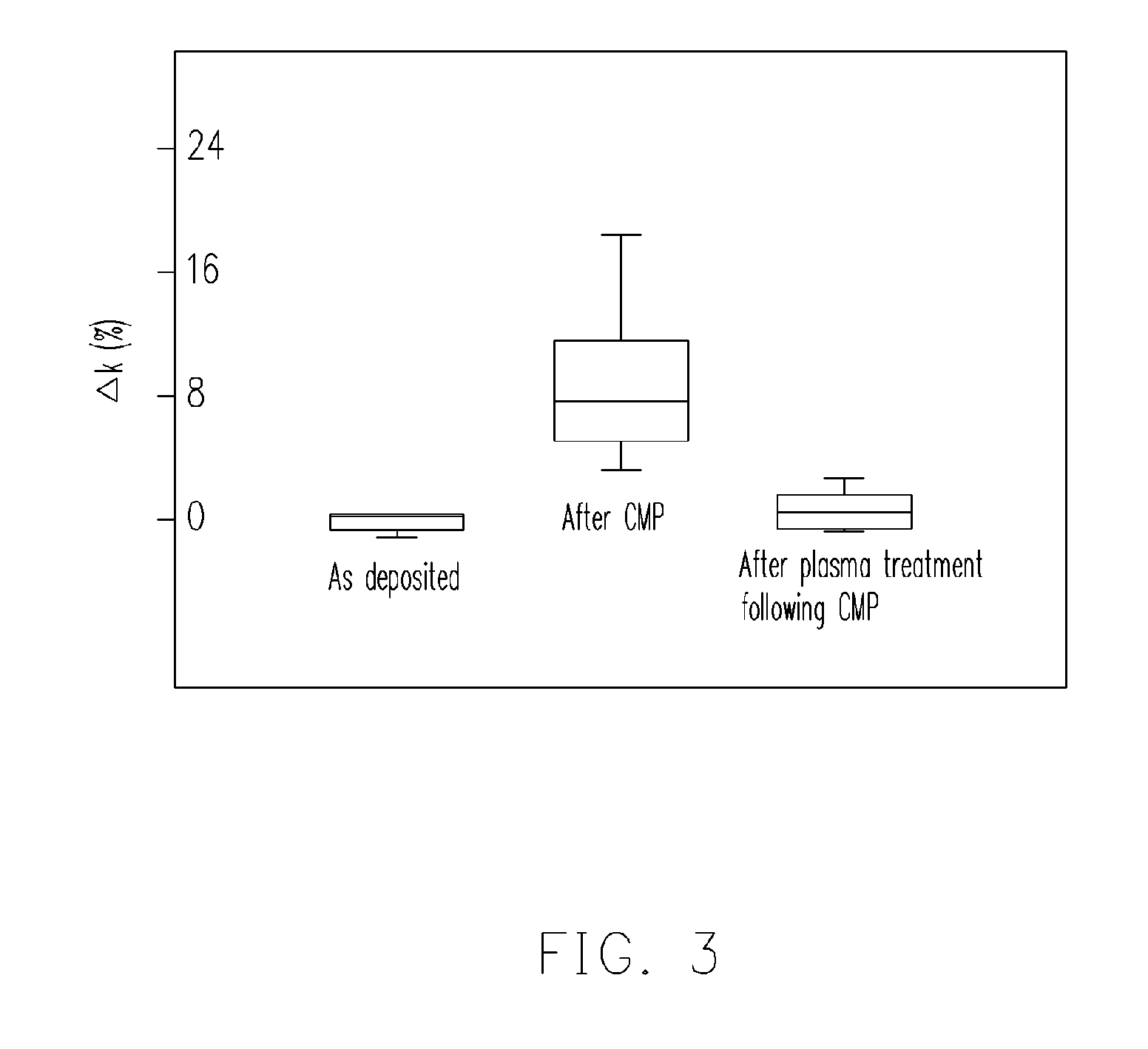Method of restoring low-k material or porous low-k layer
a low-k material and low-k layer technology, applied in the field of low-k material processing, to achieve the effect of lowering the k-value of low-k material
- Summary
- Abstract
- Description
- Claims
- Application Information
AI Technical Summary
Benefits of technology
Problems solved by technology
Method used
Image
Examples
Embodiment Construction
[0019]FIG. 1 is a flow chart of a method of restoring a low-k material according to an embodiment of this invention. In step 110, a substrate with a low-k material thereon is provided, which has been subject to a previous process that raised the k-value of the low-k material. The substrate may have a device therein, such as a MOS transistor or a memory device, and the low-k material may constitute an IMD layer covering a device. The low-k material can be a porous low-k material possibly having a k-value of about 1.0-2.7, such as, carbon-doped oxide (CDO) containing a porogen like a hydrocarbon compound (CxHy), fluorinated amorphous carbon, Parylene AF4, PAE or Cyclotene, etc. The low-k material may be formed through spin-coating, PECVD or high-density plasma (HDP) CVD. The previous process is possibly an etching, washing, ashing or CMP process that raised the k-value of the low-k material by more than 10%.
[0020] In next step 120, a plasma treatment is conducted to the low-k materia...
PUM
 Login to View More
Login to View More Abstract
Description
Claims
Application Information
 Login to View More
Login to View More - R&D
- Intellectual Property
- Life Sciences
- Materials
- Tech Scout
- Unparalleled Data Quality
- Higher Quality Content
- 60% Fewer Hallucinations
Browse by: Latest US Patents, China's latest patents, Technical Efficacy Thesaurus, Application Domain, Technology Topic, Popular Technical Reports.
© 2025 PatSnap. All rights reserved.Legal|Privacy policy|Modern Slavery Act Transparency Statement|Sitemap|About US| Contact US: help@patsnap.com



